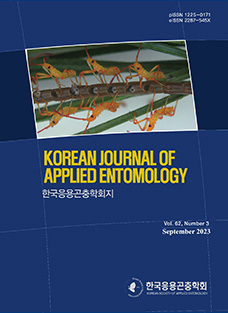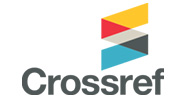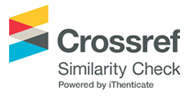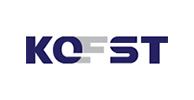Nematophagous fungi have worldwide distribution, in all habitats and climates (Gray, 1987). They capture nematodes with sophisticated trapping structures, such as adhesive nets and adhesive columns, stalked adhesive knobs, constricting rings, non-constricting rings, and sessile adhesive knobs (Liu et al., 2014). Due to its specialized trapping technique, this fungus can be stand as potential biological control agents against plant parasitic nematodes (Ahrén and Tunlid, 2003). During the nematode survey, we isolated a nematode trapping fungus from the soil around the root of Oriential melon (Cucumis melo L.) in South Korea. And, here we describe characteristics of Korean isolate.
Materials and Methods
Nematode culture
Fresh soil around the root of C. melo was collected from greenhouse in Seongju-gun, Gyeongsangbuk-do, South Korea. The nematode-trapping fungi were separated from soil by the modified sprinkling-baiting technique (Barron, 1977). Subsamples of 1.0 g soil were sprinkled onto plates of both 1.7% corn meal agar (CMA, Difco) and 1.5% water agar (WA). About 100 nematodes (Rhabditis spp.) were added to the surface of CMA and WA media plates as a bait to enhance isolation of nematode-trapping fungi. CMA plate and WA plate of three respectively were used for each soil sample. The plates were incubated at 25℃ for 14 days and observed every other day under a stereo microscope (SZX 16, Olympus, Japan) to detect the appearance of nematophagous fungi. All detected nematode-trapping fungi were photographed using a compound microscope (BX53, Olympus, Japan) equipped with microscope digital camera (DP73, Olympus, Japan) and transferred to CMA for pure culture.
DNA extraction
From pure culture, genomic DNA of fungi was extracted based on methodology described by Zhu et al. (1993). The DNA of the nematode-trapping fungus was characterized by sequencing ITS region included the 5.8 S rDNA. Primers for ITS region amplification were ITS1 (5'- TCCGTAGGTGAAC CTGCGG-3') and ITS4 (5'-CCTCCGCTTATTGATATGC-3') (White et al., 1990). Polymerase chain reaction (PCR) amplification was performed in a 50 μl final volume containing 1 μl of DNA template, 1 μl of 10 pM of each primer, 4 μl of 2.5 mM dNTPs, 0.3 μl of Taq DNA polymerase, and 5 μl of 10x PCR buffer in 37.7 μl of sterile deionized water. The genomic DNA was used as a template for PCR as follows: after an initial 3 min denaturation step at 94℃, a 35 cycle amplification (94℃ for 1 min, 54℃ for 1 min, and 1 min at 72℃) was conducted. The final extension was continued for 8 min at 72℃. PCR products of amplification of DNA by PCR were confirm by electrophoresis and purified with the DokdoPrepTM Gel Extraction Kit (ELPIS Biotech, Korea). PCR amplicons were followed by nucleotide sequencing (Cosmogentech, Korea).
In order to confirm the species, the sequence of nematodetrapping fungus was compared by the BLAST sequence alignment software of the NCBI database (National Center for Biotechnology Information (http://www.ncbi.nlm.nih.gov/). Results of the closest nucleotide sequences were selected to BLASTn analysis, the combined sequences of ITS region exhibited 99% similarity to A. sinensis strain 105-1 (AY773445.1). To differentiate previous isolates, we designated query strain as strain SJCM-1. Phylogenetic analyses were performed by MEGA version 6.10 with the neighbor-joining (NJ) statistical method (Saitou and Nei, 1987) and the Jukes-Cantor model (Campos et al., 2010;Falbo et al., 2013).
Results and Discussion
Taxonomic changes of species are as follows:
Arthrobotrys sinensis (Xing Z. Liu & K.Q. Zhang, 1999) M. Scholler, Hagedorn and A. Rubner, Sydowia 51: 104 (1999) = Monacrosporium sinense Xing Z. Liu & K.Q. Zhang, Mycol. Res. 98: 863 (1994)
The species was originally described by Xing Z. Liu and K.Q. Zhang (1999) from field soil in Huaxi, China (Yu et al., 2014). This fungus grows rapidly and form white colony. The diameter of hyphae was 4.2-9.8 (6.8) μm. The conidiophore was measured as 290.4-528.6 (342.9) μm in length, 4.2-5.5 (4.8) μm wide at the base, tapering to 2.5-2.8 (2.6) μm wide at the apex. There were few branched conidiophores. The fungus produces obovate shaped 1-3 septate conidia on CMA, 30.5 μm (27.3 - 32.8) long, and 20.3 μm (17.6 - 22.4) μm wide (Fig. 1C-G). This fungus forms a predaceous organ of three dimensional adhesive networks (Fig. 1H). The adhesive networks are produced on CMA medium either in the presence of nematodes or without nematodes (Fig. 2A and B).
The 590 bp sequence that was obtained was aligned for comparison with other sequences. A BLASTn search of the SJCM-1 strain on the ITS region revealed high-scoring matches with some Arthrobotrys species, the most similar to A. sinensis (GenBank accession number AY773445) which was 99% identical to SJCM-1 strain. The tree was constructed based on the ITS region with 5.8 S rDNA sequences with the NJ algorithm by applying the Jukes-Cantor model implemented in MEGA version 6.10 with 1000 bootstrap replications. The phylogenetic relationships of the SJCM-1 strain which are more similar to A. sinensis are shown in Fig. 3.
The nematophagous fungi have been described approximately 700 species (Yu et al., 2014). In Korea, 8 species of Arthrobotrys (Arthrobotrys amerospora, A. arthrobotryoides, A. brochopaga, A. conoides, A. dactyloides, A. musiformis, A. oligospora, A. vermicola) have been reported (Wu and Kim, 2010). The A. sinensis is a new species to Korea. This fungus was almost consistent with the previous original fungus described by Liu and Zhang (Table 1), however there were some differences such as the conidiophores were longer and the size of the conidia was large etc. This fungus closely resembles to A. cookedickinson and A. indica in its relatively small conidia and conidial shape, but differs in size of conidia (27.3-32.8 × 17.6-22.4 μm) (Yu et al., 2014). The A. sinensis shows a rapid growth rate. When the nematode is added to the culture medium of these strains, a trap of three-dimensional adhesive nets is formed within one to two days. Here in study, we report the unrecorded nematode-trapping fungus species A. sinensis for the first time in Korea, and it can be a used as one of the biological control resources and a potential option for the management of the plant-parasitic nematodes.












 KSAE
KSAE





